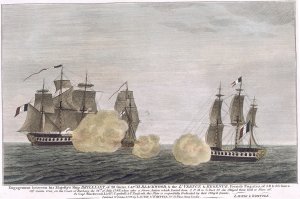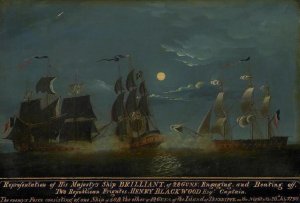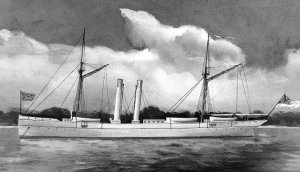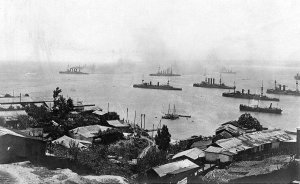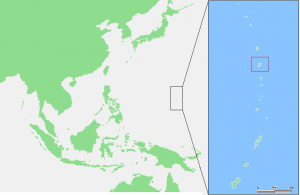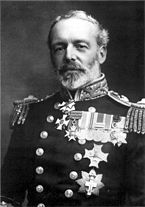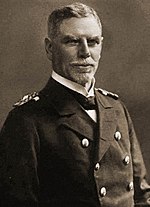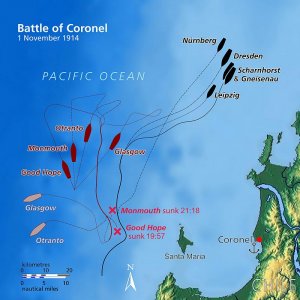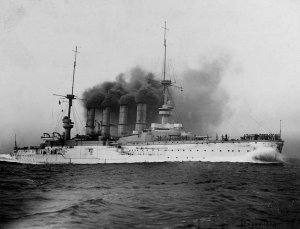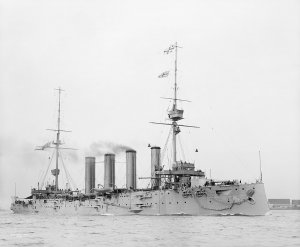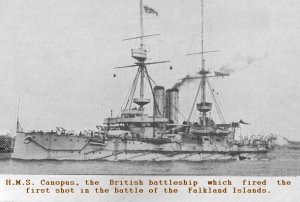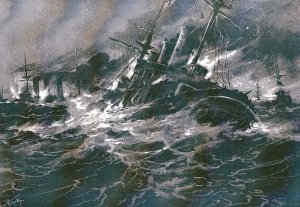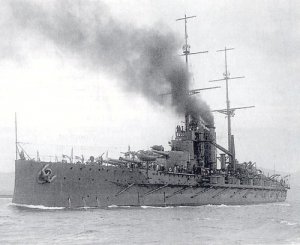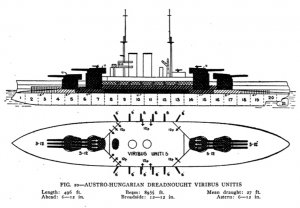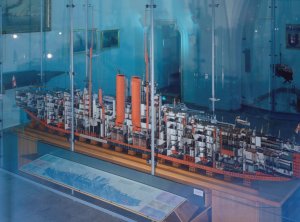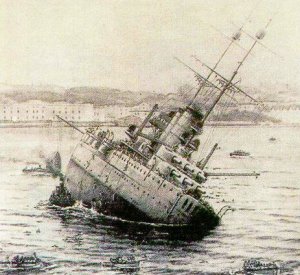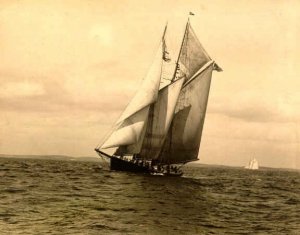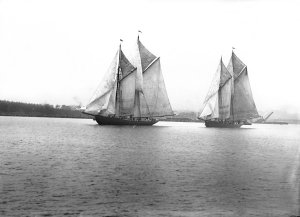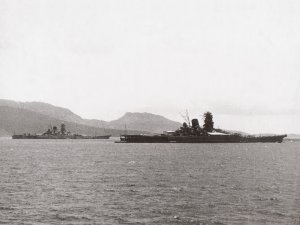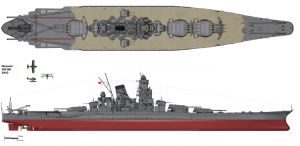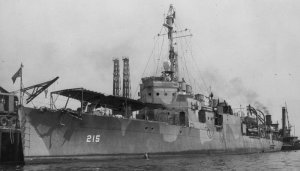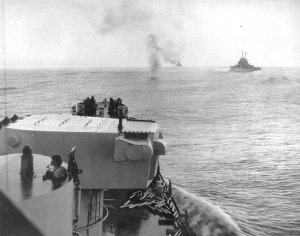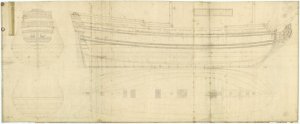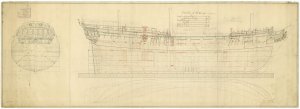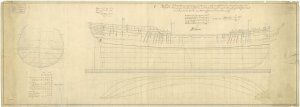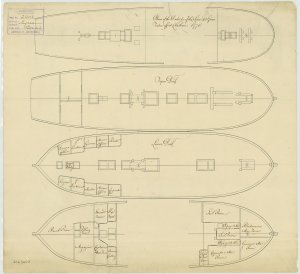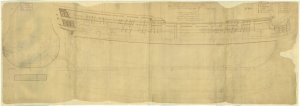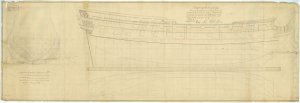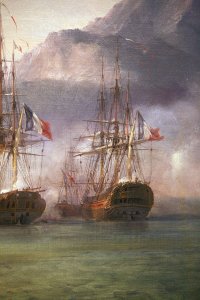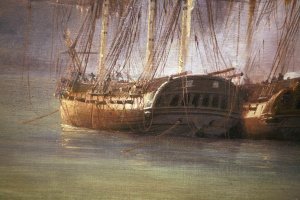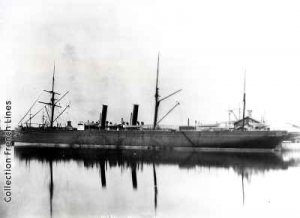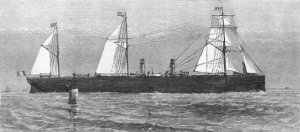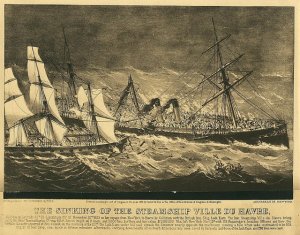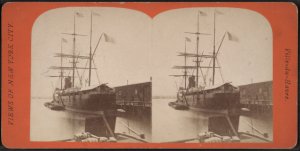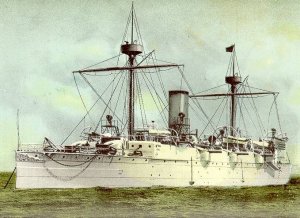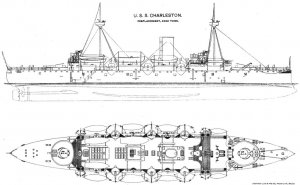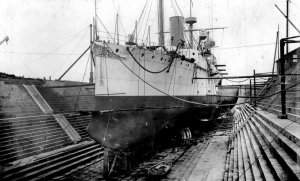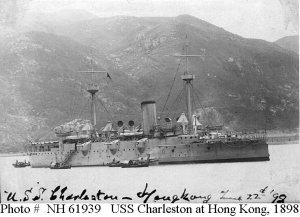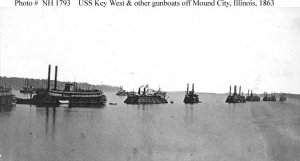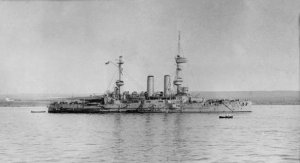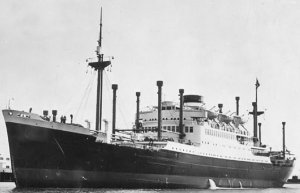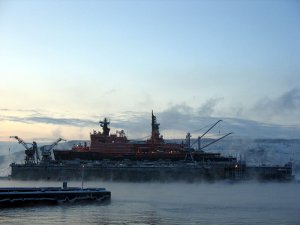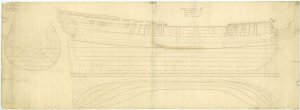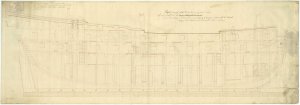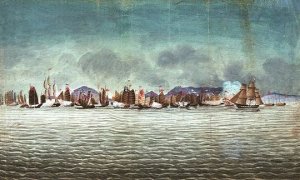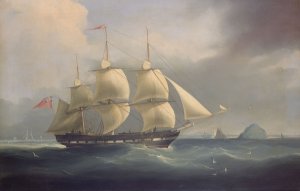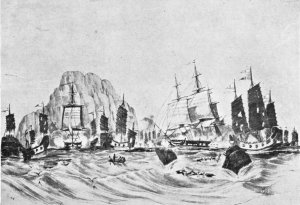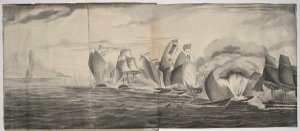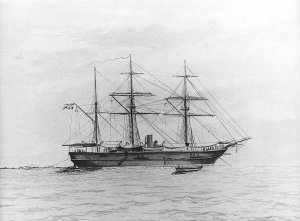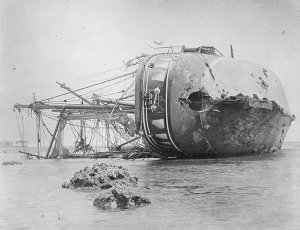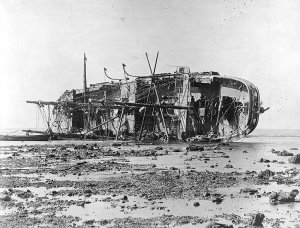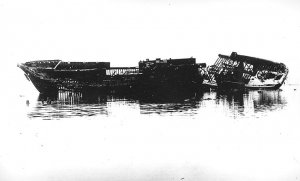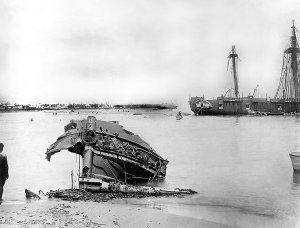Today in Naval History - Naval / Maritime Events in History
Other Events on 31 October
1641 – Death of Cornelis Jol, Dutch admiral (b. 1597)
Cornelis Corneliszoon Jol (1597 – 31 October 1641), nicknamed Houtebeen ("pegleg"), was a 17th-century Dutch corsair and admiral in the Dutch West India Company during the Eighty Years' War between Spain and the Dutch Republic. He was one of several early buccaneers to attack Campeche, looting the settlement in 1633, and was active against the Spanish in the Spanish Main and throughout the Caribbean during the 1630s and 40s.
Jol was really more of a pirate (or rather privateer) than an admiral, raiding Spanish and Portuguese fleets and gathering large amounts of loot. He was nicknamed Houtebeen (Perna de Pau in Portuguese and Pie de Palo in Spanish), because he lost a leg during battle and became one of the earliest documented pirates to use a wooden peg leg. The Spanish also nicknamed him El Pirata.
https://en.wikipedia.org/wiki/Cornelis_Jol
1745 - Squadron under Rear Admiral Isaac Townsend took great part of a large French convoy off Martinique.
https://en.wikipedia.org/wiki/Isaac_Townsend
1793 - HMS Quebec (1781 - 32) and consorts attacked Ostend and Nieuport.
HMS Quebec was a 32-gun fifth rate frigate launched in 1781 and broken up in 1816. She sailed under various captains, participating in the American War of Independence, the French Revolutionary Wars, and the Napoleonic Wars. During these wars she captured many enemy merchantmen and smaller privateers in northern or Caribbean waters. She was built by George Parsons at Bursledon, Hampshire.
https://en.wikipedia.org/wiki/HMS_Quebec_(1781)
1800 – Launch of French Clorinde at Basse-Indre – captured by the British Navy 30 November 1803, becoming HMS Clorinde.
Uranie class, (40-gun design of 1797 by Jean-François Gautier, with 28 x 18-pounder and 12 x 8-pounder guns; both ships built by Pierre Degay and Entreprise Crucy at Basse-Indre, near Nantes).
Clorinde was a 44-gun Uranie class frigate of the French Navy. The Royal Navy captured her in 1803 and took her into service as HMS Clorinde. She was sold in 1817.
French naval service
She was laid down as Havraise in 1796, and was renamed to Clorinde before her commissioning in Nantes. In 1801, she was under Emmanuel Halgan.
In February 1802, under frigate captain Pierre-Marie Le Bozec, she was sent on station at Santo Domingo. She was surrendered to the British at the surrender of Cap Francais, along with Surveillante. The Royal Navy took her into service under her existing name.
Royal Navy service
The Royal Navy commissioned Clorinde at Jamaica in May 1804 under Captain Robert O'Brien. She arrived at Plymouth on 23 July.
Between November 1807 and December 1808 Clorinde underwent repairs. In October, Captain Thomas Briggs recommissioned her. He sailed her to the East Indies on 17 February 1809.
On 28 January 1810 Clorinde captured the French privateer Henri. Henri was pierced for 14 gun, but mounted only eight 12-pounders. She had a crew of 57 men.
In November 1810, Clorinde was part of the squadron participating in the invasion of Isle de France.
In September 1814 Clorinde was under the command of Captain Samuel Pechell
https://en.wikipedia.org/wiki/French_frigate_Clorinde_(1801)
1803 - HMS Admiral Mitchell (12), Lt. Alexander Shippard, drove ashore a French gun-brig, and one vessel from the convoy he was escorting, under the battery at Patel.
His Majesty's hired armed cutter (or schooner) Admiral Mitchell served under two contracts for the British Royal Navy, one at the end of the French Revolutionary Wars and the second at the beginning of the Napoleonic Wars. She participated in several notable small engagements and actions. In 1806 the Admiralty purchased her and took her into service as the Sir Andrew Mitchell in 1807.
https://en.wikipedia.org/wiki/Hired_armed_cutter_Admiral_Mitchell
1808 - HMS Circe (1804 - 32), Cptn. Hugh Pigott, captured La Palinure (16), Lt. Fourniers, off Diamond Rock, Martinique
HMS Circe was a Royal Navy 32-gun fifth-rate Thames-class frigate, built by Master Shipwright Joseph Tucker at Plymouth Dockyard, and launched in 1804. She served in the Caribbean during the Napoleonic Wars, and participated in an action and a campaign for which in 1847 in the Admiralty authorised the issuance of the Naval General Service Medal with clasps. The action, off the Pearl Rock, near Saint-Pierre, Martinique, was a debacle that cost Circe dearly. However, she also had some success in capturing privateers and a French brig. She was sold in 1814.
On 31 October 1808 Circe encountered a French brig near Diamond Rock. At Circe's approach the brig took shelter under the guns of a battery. Still, after an engagement of no more than 15 minutes, Circe captured the Palinure, which was under the command of M. Fourniers. Palinure was armed with fourteen 24-pounder carronades and two 6-pounder guns. She had 79 men aboard, most of whom were troops from the 83 Regiment. She had lost seven killed and eight wounded; Circe had lost one man killed and one wounded. The guns of the battery were so much higher than the vessels beneath them that they could not bring their guns to bear and fired few, if any shots. Earlier that month Palinure had recaptured the Cruizer-class brig-sloop Carnation.
https://en.wikipedia.org/wiki/HMS_Circe_(1804)
1853 – Launch of French Tourville was a 90-gun sail and steam ship of the line of the French Navy, lead ship of her class.
She took part in the Baltic theatre of the Crimean War, shelling Sweaborg on 10 August 1855. She later took part in the French Intervention in Mexico as a troop ship.
Put in ordinary in 1864, she was hulked in Cherbourg in 1871 to serve as a prison for survivors of the Paris Commune. Struck the next year, she was renamed to Nestor and eventually broken up in 1878.
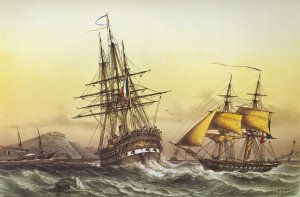
Duquesne, sister ship of Tourville. drawing by Louis Le Breton
https://en.wikipedia.org/wiki/French_ship_Tourville_(1853)
1905 - The four-masted barque PAMIR started her maiden voyage from Hamburg to Chile for the nitrate trade
Pamir, a four-masted barque, was one of the famous Flying P-Liner sailing ships of the German shipping company F. Laeisz. She was the last commercial sailing ship to round Cape Horn, in 1949. By 1957, she had been outmoded by modern bulk carriers and could not operate at a profit. Her shipping consortium's inability to finance much-needed repairs or to recruit sufficient sail-trained officers caused severe technical difficulties. On 21 September 1957, she was caught in Hurricane Carrie and sank off the Azores, with only six survivors rescued after an extensive search.
https://en.wikipedia.org/wiki/Pamir_(ship)
1941 – World War II: The destroyer USS Reuben James is torpedoed by a German U-boat near Iceland, killing more than 100 U.S. Navy sailors. It is the first U.S. Navy vessel sunk by enemy action in WWII.
USS Reuben James (DD-245)—a post-World War I, four-funnel Clemson-class destroyer—was the first United States Navy ship sunk by hostile action in the European theater of World War II and the first named for Boatswain's Mate Reuben James (c.1776–1838), who distinguished himself fighting in the First Barbary War.
Reuben James was laid down on 2 April 1919 by the New York Shipbuilding Corporation of Camden, New Jersey, launched on 4 October 1919, and commissioned on 24 September 1920, with Commander Gordon W. Hines in command. The destroyer was sunk by a torpedo attack from German submarine U-552 near Iceland on 31 October 1941, before the U.S. had entered the war.
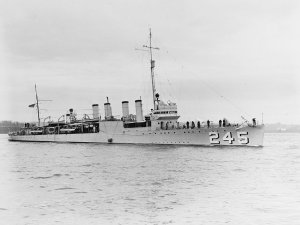
https://en.wikipedia.org/wiki/USS_Reuben_James_(DD-245)
1951 - HMS Eagle, an Audacious-class aircraft carrier of the Royal Navy, completed
HMS Eagle was an Audacious-class aircraft carrier of the Royal Navy, in service 1951–1972. With her sister ship Ark Royal, she was one of the two largest Royal Navy aircraft carriers built.
She was laid down on 24 October 1942 at Harland and Wolff shipyard in Belfast as one of four ships of the Audacious class. These were laid down during World War II as part of the British naval buildup during that conflict. Two were cancelled at the end of hostilities, and the remaining two were suspended. Originally designated Audacious, she was renamed as Eagle (the fifteenth Royal Navy ship to receive this name), taking the name of the cancelled third ship of the class on 21 January 1946. She was finally launched by Princess Elizabeth on 19 March 1946.
Although Eagle was commissioned in October 1951 without an angled flight deck, one was added three years later. In 1952 she took part in the first large NATO naval exercise, Exercise Mainbrace.
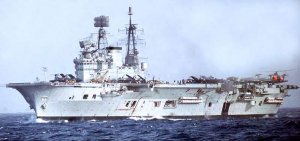
https://en.wikipedia.org/wiki/HMS_Eagle_(R05)
1956 – Suez Crisis: The United Kingdom and France begin bombing Egypt to force the reopening of the Suez Canal.
The Suez Crisis, or the Second Arab–Israeli War, also named the Tripartite Aggression in the Arab world and Operation Kadesh or Sinai War in Israel, was an invasion of Egypt in late 1956 by Israel, followed by the United Kingdom and France. The aims were to regain Western control of the Suez Canal and to remove Egyptian President Gamal Abdel Nasser, who had just nationalized the canal. After the fighting had started, political pressure from the United States, the Soviet Unionand the United Nations led to a withdrawal by the three invaders. The episode humiliated the United Kingdom and France and strengthened Nasser.
On 29 October, Israel invaded the Egyptian Sinai. Britain and France issued a joint ultimatum to cease fire, which was ignored. On 5 November, Britain and France landed paratroopers along the Suez Canal. The Egyptian forces were defeated, but they did block the canal to all shipping. It later became clear that the Israeli invasion and the subsequent Anglo-French attack had been planned beforehand by the three countries.
The three allies had attained a number of their military objectives, but the canal was useless. Heavy political pressure from the United States and the USSR led to a withdrawal. U.S. President Dwight D. Eisenhower had strongly warned Britain not to invade; he threatened serious damage to the British financial system by selling the US government's pound sterling bonds. Historians conclude the crisis "signified the end of Great Britain's role as one of the world's major powers". The Suez Canal was closed from October 1956 until March 1957. Israel fulfilled some of its objectives, such as attaining freedom of navigation through the Straits of Tiran, which Egypt had blocked to Israeli shipping since 1950.
As a result of the conflict, the United Nations created the UNEF Peacekeepers to police the Egyptian–Israeli border, British Prime Minister Anthony Eden resigned, Canadian Minister of External Affairs Lester Pearson won the Nobel Peace Prize, and the USSR may have been emboldened to invade Hungary.
https://en.wikipedia.org/wiki/Suez_Crisis
Other Events on 31 October
1641 – Death of Cornelis Jol, Dutch admiral (b. 1597)
Cornelis Corneliszoon Jol (1597 – 31 October 1641), nicknamed Houtebeen ("pegleg"), was a 17th-century Dutch corsair and admiral in the Dutch West India Company during the Eighty Years' War between Spain and the Dutch Republic. He was one of several early buccaneers to attack Campeche, looting the settlement in 1633, and was active against the Spanish in the Spanish Main and throughout the Caribbean during the 1630s and 40s.
Jol was really more of a pirate (or rather privateer) than an admiral, raiding Spanish and Portuguese fleets and gathering large amounts of loot. He was nicknamed Houtebeen (Perna de Pau in Portuguese and Pie de Palo in Spanish), because he lost a leg during battle and became one of the earliest documented pirates to use a wooden peg leg. The Spanish also nicknamed him El Pirata.
https://en.wikipedia.org/wiki/Cornelis_Jol
1745 - Squadron under Rear Admiral Isaac Townsend took great part of a large French convoy off Martinique.
https://en.wikipedia.org/wiki/Isaac_Townsend
1793 - HMS Quebec (1781 - 32) and consorts attacked Ostend and Nieuport.
HMS Quebec was a 32-gun fifth rate frigate launched in 1781 and broken up in 1816. She sailed under various captains, participating in the American War of Independence, the French Revolutionary Wars, and the Napoleonic Wars. During these wars she captured many enemy merchantmen and smaller privateers in northern or Caribbean waters. She was built by George Parsons at Bursledon, Hampshire.
https://en.wikipedia.org/wiki/HMS_Quebec_(1781)
1800 – Launch of French Clorinde at Basse-Indre – captured by the British Navy 30 November 1803, becoming HMS Clorinde.
Uranie class, (40-gun design of 1797 by Jean-François Gautier, with 28 x 18-pounder and 12 x 8-pounder guns; both ships built by Pierre Degay and Entreprise Crucy at Basse-Indre, near Nantes).
Clorinde was a 44-gun Uranie class frigate of the French Navy. The Royal Navy captured her in 1803 and took her into service as HMS Clorinde. She was sold in 1817.
French naval service
She was laid down as Havraise in 1796, and was renamed to Clorinde before her commissioning in Nantes. In 1801, she was under Emmanuel Halgan.
In February 1802, under frigate captain Pierre-Marie Le Bozec, she was sent on station at Santo Domingo. She was surrendered to the British at the surrender of Cap Francais, along with Surveillante. The Royal Navy took her into service under her existing name.
Royal Navy service
The Royal Navy commissioned Clorinde at Jamaica in May 1804 under Captain Robert O'Brien. She arrived at Plymouth on 23 July.
Between November 1807 and December 1808 Clorinde underwent repairs. In October, Captain Thomas Briggs recommissioned her. He sailed her to the East Indies on 17 February 1809.
On 28 January 1810 Clorinde captured the French privateer Henri. Henri was pierced for 14 gun, but mounted only eight 12-pounders. She had a crew of 57 men.
In November 1810, Clorinde was part of the squadron participating in the invasion of Isle de France.
In September 1814 Clorinde was under the command of Captain Samuel Pechell
https://en.wikipedia.org/wiki/French_frigate_Clorinde_(1801)
1803 - HMS Admiral Mitchell (12), Lt. Alexander Shippard, drove ashore a French gun-brig, and one vessel from the convoy he was escorting, under the battery at Patel.
His Majesty's hired armed cutter (or schooner) Admiral Mitchell served under two contracts for the British Royal Navy, one at the end of the French Revolutionary Wars and the second at the beginning of the Napoleonic Wars. She participated in several notable small engagements and actions. In 1806 the Admiralty purchased her and took her into service as the Sir Andrew Mitchell in 1807.
https://en.wikipedia.org/wiki/Hired_armed_cutter_Admiral_Mitchell
1808 - HMS Circe (1804 - 32), Cptn. Hugh Pigott, captured La Palinure (16), Lt. Fourniers, off Diamond Rock, Martinique
HMS Circe was a Royal Navy 32-gun fifth-rate Thames-class frigate, built by Master Shipwright Joseph Tucker at Plymouth Dockyard, and launched in 1804. She served in the Caribbean during the Napoleonic Wars, and participated in an action and a campaign for which in 1847 in the Admiralty authorised the issuance of the Naval General Service Medal with clasps. The action, off the Pearl Rock, near Saint-Pierre, Martinique, was a debacle that cost Circe dearly. However, she also had some success in capturing privateers and a French brig. She was sold in 1814.
On 31 October 1808 Circe encountered a French brig near Diamond Rock. At Circe's approach the brig took shelter under the guns of a battery. Still, after an engagement of no more than 15 minutes, Circe captured the Palinure, which was under the command of M. Fourniers. Palinure was armed with fourteen 24-pounder carronades and two 6-pounder guns. She had 79 men aboard, most of whom were troops from the 83 Regiment. She had lost seven killed and eight wounded; Circe had lost one man killed and one wounded. The guns of the battery were so much higher than the vessels beneath them that they could not bring their guns to bear and fired few, if any shots. Earlier that month Palinure had recaptured the Cruizer-class brig-sloop Carnation.
https://en.wikipedia.org/wiki/HMS_Circe_(1804)
1853 – Launch of French Tourville was a 90-gun sail and steam ship of the line of the French Navy, lead ship of her class.
She took part in the Baltic theatre of the Crimean War, shelling Sweaborg on 10 August 1855. She later took part in the French Intervention in Mexico as a troop ship.
Put in ordinary in 1864, she was hulked in Cherbourg in 1871 to serve as a prison for survivors of the Paris Commune. Struck the next year, she was renamed to Nestor and eventually broken up in 1878.

Duquesne, sister ship of Tourville. drawing by Louis Le Breton
https://en.wikipedia.org/wiki/French_ship_Tourville_(1853)
1905 - The four-masted barque PAMIR started her maiden voyage from Hamburg to Chile for the nitrate trade
Pamir, a four-masted barque, was one of the famous Flying P-Liner sailing ships of the German shipping company F. Laeisz. She was the last commercial sailing ship to round Cape Horn, in 1949. By 1957, she had been outmoded by modern bulk carriers and could not operate at a profit. Her shipping consortium's inability to finance much-needed repairs or to recruit sufficient sail-trained officers caused severe technical difficulties. On 21 September 1957, she was caught in Hurricane Carrie and sank off the Azores, with only six survivors rescued after an extensive search.
https://en.wikipedia.org/wiki/Pamir_(ship)
1941 – World War II: The destroyer USS Reuben James is torpedoed by a German U-boat near Iceland, killing more than 100 U.S. Navy sailors. It is the first U.S. Navy vessel sunk by enemy action in WWII.
USS Reuben James (DD-245)—a post-World War I, four-funnel Clemson-class destroyer—was the first United States Navy ship sunk by hostile action in the European theater of World War II and the first named for Boatswain's Mate Reuben James (c.1776–1838), who distinguished himself fighting in the First Barbary War.
Reuben James was laid down on 2 April 1919 by the New York Shipbuilding Corporation of Camden, New Jersey, launched on 4 October 1919, and commissioned on 24 September 1920, with Commander Gordon W. Hines in command. The destroyer was sunk by a torpedo attack from German submarine U-552 near Iceland on 31 October 1941, before the U.S. had entered the war.

https://en.wikipedia.org/wiki/USS_Reuben_James_(DD-245)
1951 - HMS Eagle, an Audacious-class aircraft carrier of the Royal Navy, completed
HMS Eagle was an Audacious-class aircraft carrier of the Royal Navy, in service 1951–1972. With her sister ship Ark Royal, she was one of the two largest Royal Navy aircraft carriers built.
She was laid down on 24 October 1942 at Harland and Wolff shipyard in Belfast as one of four ships of the Audacious class. These were laid down during World War II as part of the British naval buildup during that conflict. Two were cancelled at the end of hostilities, and the remaining two were suspended. Originally designated Audacious, she was renamed as Eagle (the fifteenth Royal Navy ship to receive this name), taking the name of the cancelled third ship of the class on 21 January 1946. She was finally launched by Princess Elizabeth on 19 March 1946.
Although Eagle was commissioned in October 1951 without an angled flight deck, one was added three years later. In 1952 she took part in the first large NATO naval exercise, Exercise Mainbrace.

https://en.wikipedia.org/wiki/HMS_Eagle_(R05)
1956 – Suez Crisis: The United Kingdom and France begin bombing Egypt to force the reopening of the Suez Canal.
The Suez Crisis, or the Second Arab–Israeli War, also named the Tripartite Aggression in the Arab world and Operation Kadesh or Sinai War in Israel, was an invasion of Egypt in late 1956 by Israel, followed by the United Kingdom and France. The aims were to regain Western control of the Suez Canal and to remove Egyptian President Gamal Abdel Nasser, who had just nationalized the canal. After the fighting had started, political pressure from the United States, the Soviet Unionand the United Nations led to a withdrawal by the three invaders. The episode humiliated the United Kingdom and France and strengthened Nasser.
On 29 October, Israel invaded the Egyptian Sinai. Britain and France issued a joint ultimatum to cease fire, which was ignored. On 5 November, Britain and France landed paratroopers along the Suez Canal. The Egyptian forces were defeated, but they did block the canal to all shipping. It later became clear that the Israeli invasion and the subsequent Anglo-French attack had been planned beforehand by the three countries.
The three allies had attained a number of their military objectives, but the canal was useless. Heavy political pressure from the United States and the USSR led to a withdrawal. U.S. President Dwight D. Eisenhower had strongly warned Britain not to invade; he threatened serious damage to the British financial system by selling the US government's pound sterling bonds. Historians conclude the crisis "signified the end of Great Britain's role as one of the world's major powers". The Suez Canal was closed from October 1956 until March 1957. Israel fulfilled some of its objectives, such as attaining freedom of navigation through the Straits of Tiran, which Egypt had blocked to Israeli shipping since 1950.
As a result of the conflict, the United Nations created the UNEF Peacekeepers to police the Egyptian–Israeli border, British Prime Minister Anthony Eden resigned, Canadian Minister of External Affairs Lester Pearson won the Nobel Peace Prize, and the USSR may have been emboldened to invade Hungary.
https://en.wikipedia.org/wiki/Suez_Crisis


